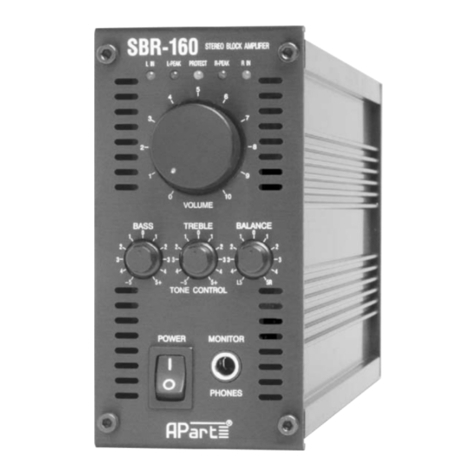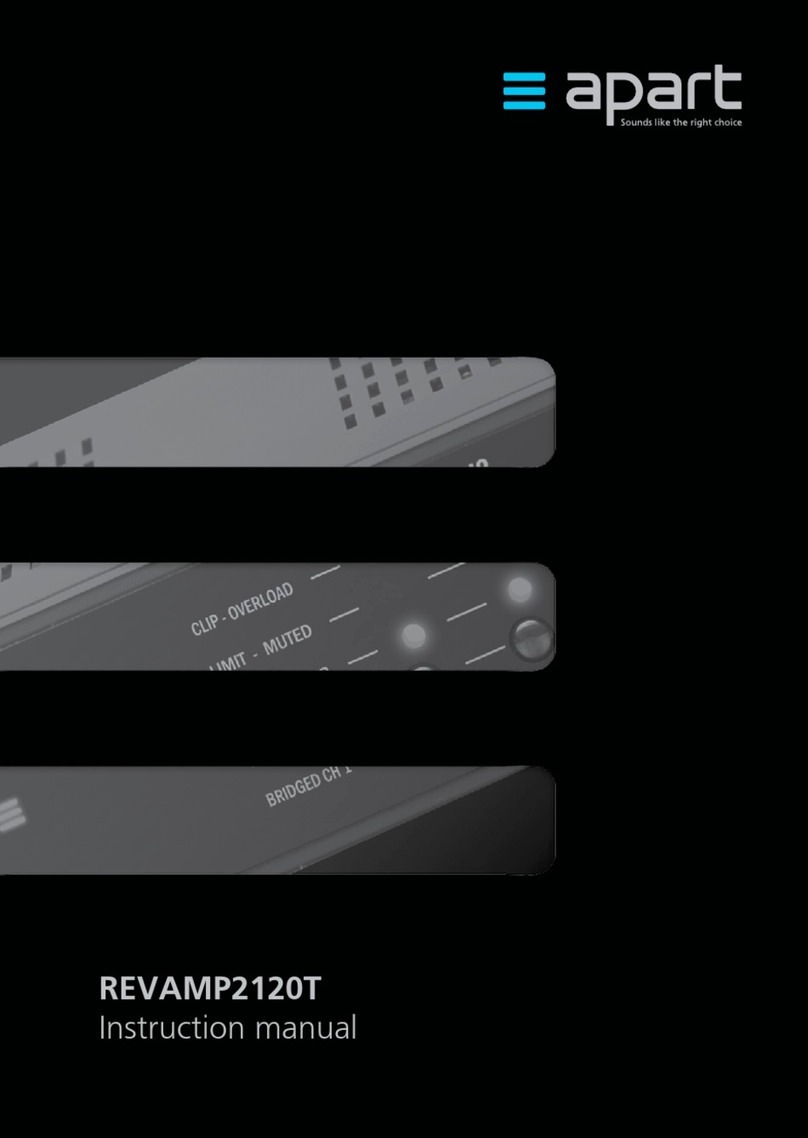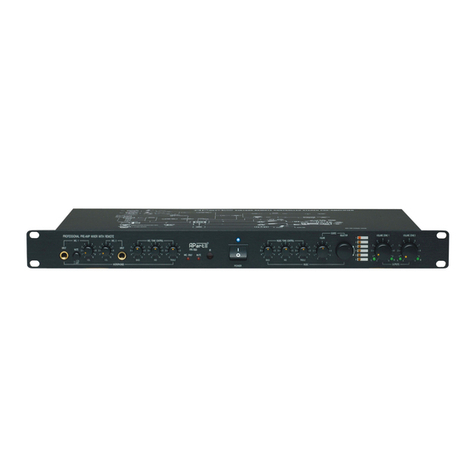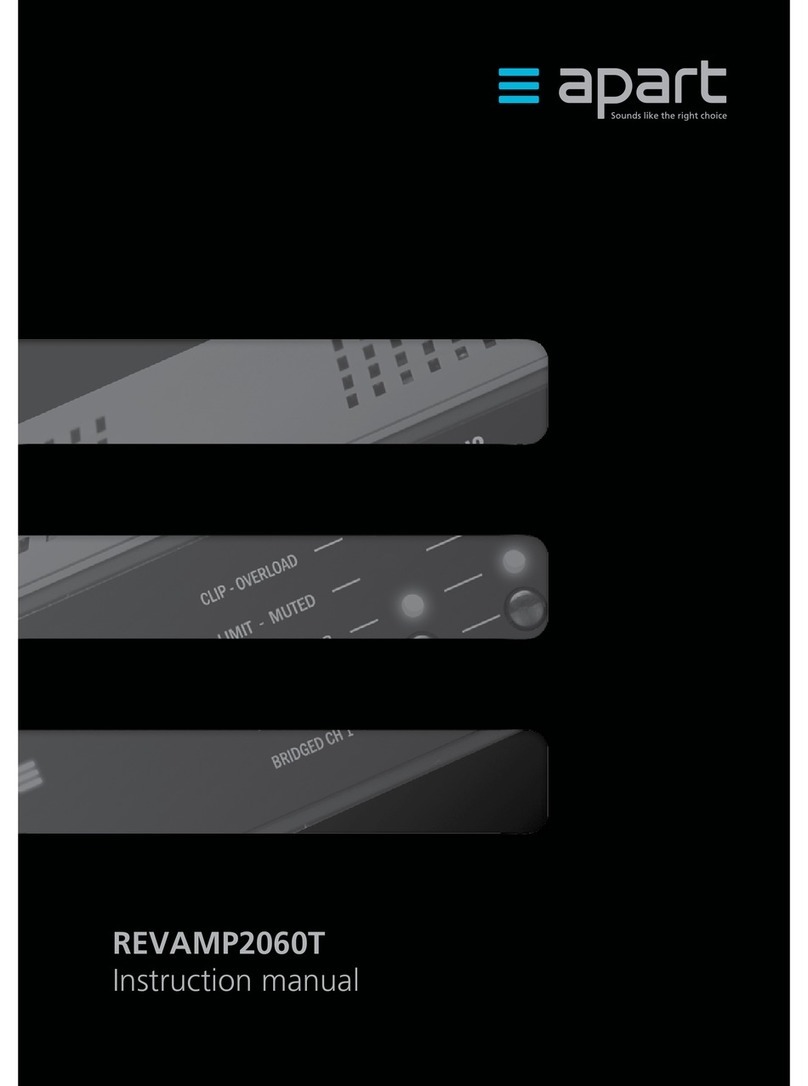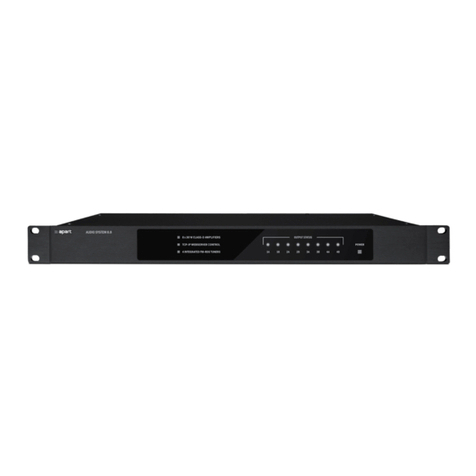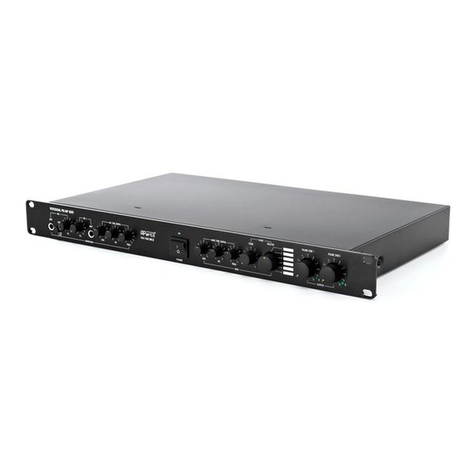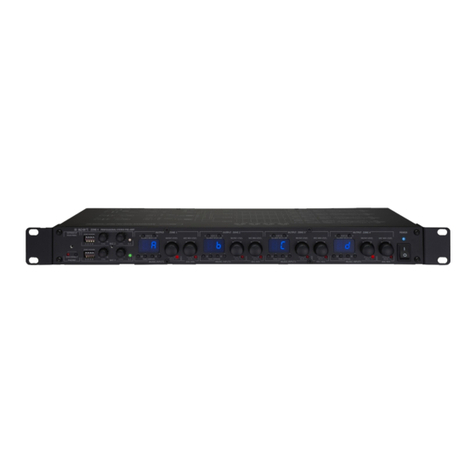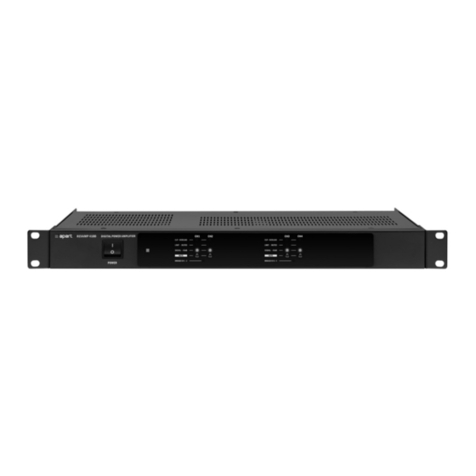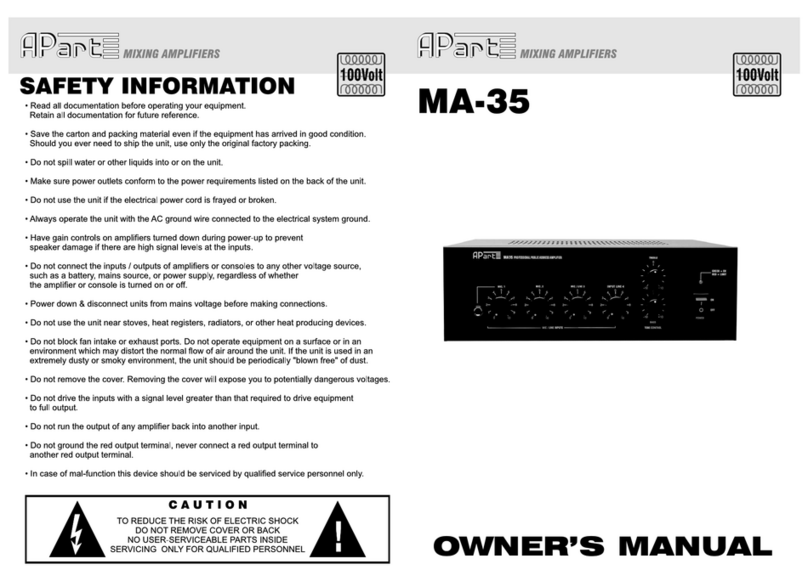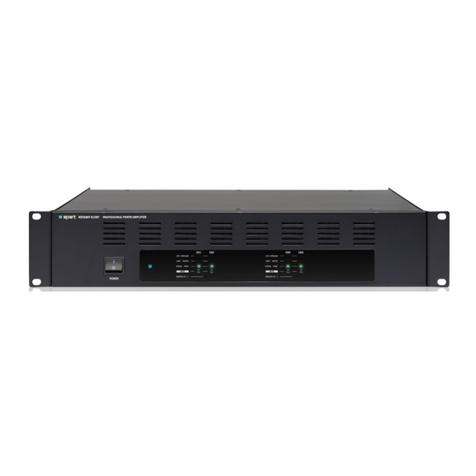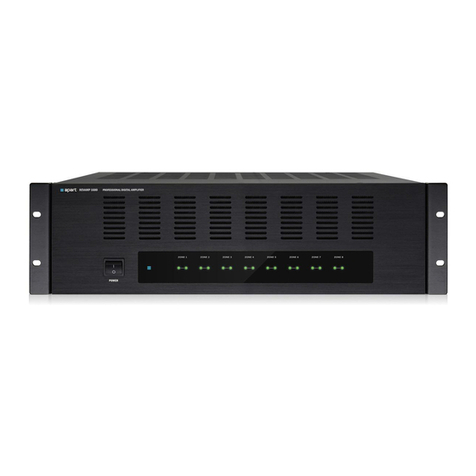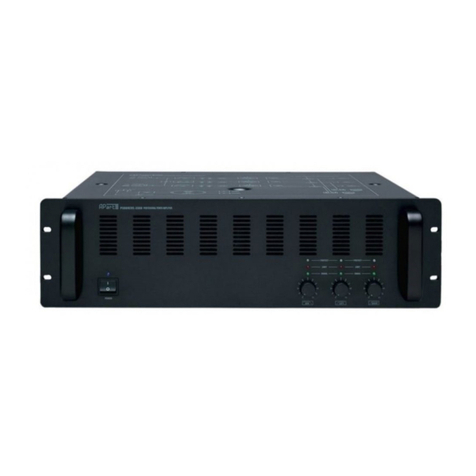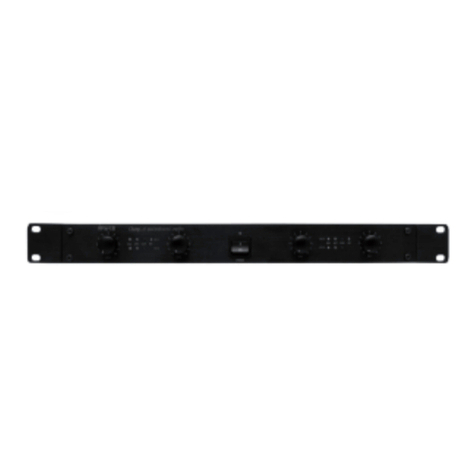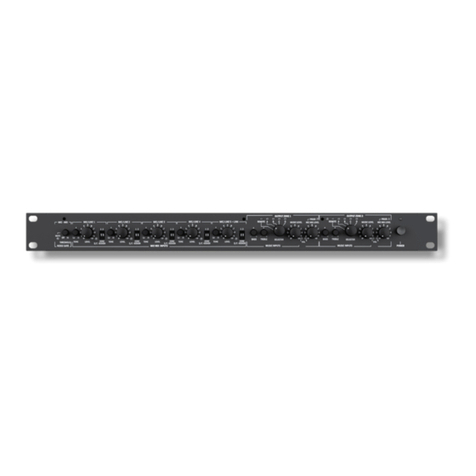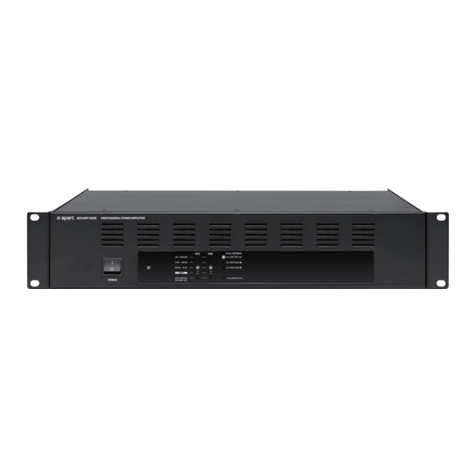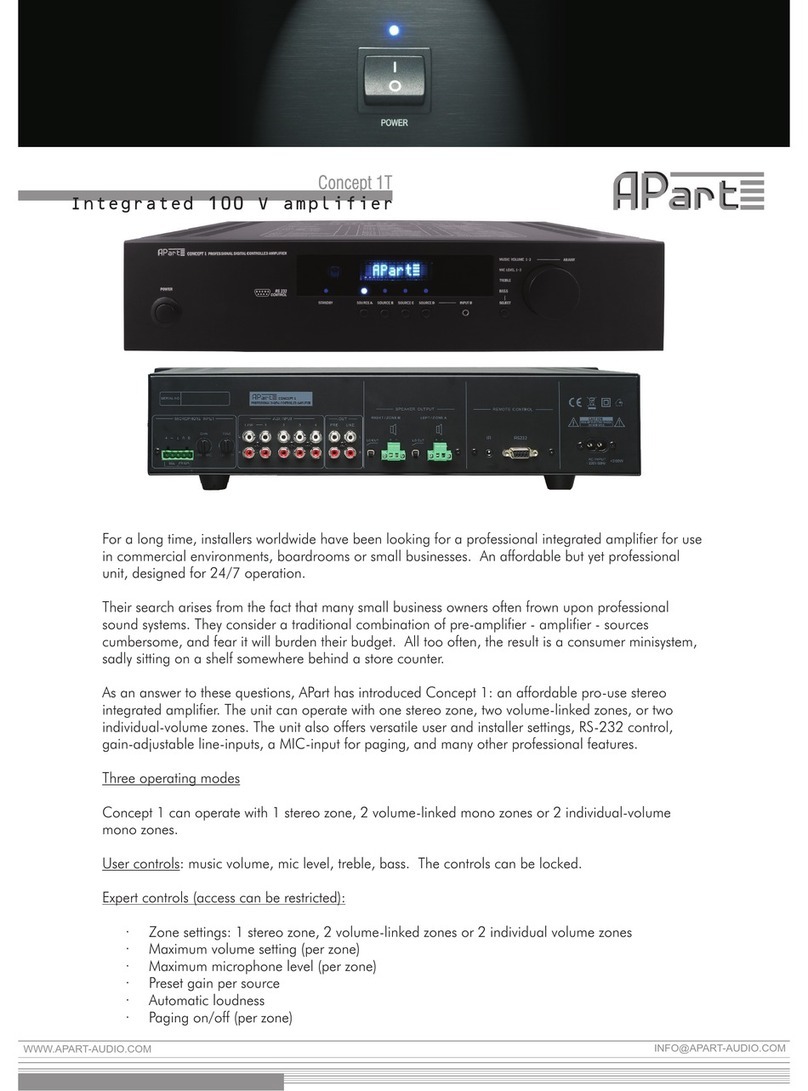35 Watts (MA35) or 65 Watts (MA65). In 100 Volt this results in
a minimum load impedance of 286 Ohms (MA35) or 154 Ohms
(MA65). The low impedance output (8 Ohms) requires a load of
8 to 16 Ohms. Never use more than one output simultaneously.
This will result in continuous overloads and will cause excessive
heat dissipation.
6. Chime and mute contact terminals: by shorting these terminals,
the chime will sound (first turn the chime level control to set
the loudness of the chime) and music will be muted. Never
apply any foreign Voltage to these terminals, in other words:
only connect potential free or “dry” contacts such as push
buttons or relay contacts.
7. Pre-amp out / amp in: if necessary, you can send the signal of
the preamplifier to an external device such as an equalizer or
compressor/limiter/leveller and feed the treated signal back into
the amplifier via the poweramp input. When you don’t use this
feature, the RCA bridge must be placed, or no sound will be
heard.
8. REC out: To record paging messages etc, connect this output to
any recording device with line level input, or connect to another
power/mixing amplifier.
9. Line input 4: stereo RCA input for line level signals from tuners,
CD players… The left and right signals are internally mixed to
a mono signal. You can also connect a mono source to the left
and/or right channel input.
10. Line input 3: stereo RCA input for line level signals from tuners,
CD players… The left and right signals are internally mixed to
a mono signal. You can also connect a mono source to the left
and/or right channel input. This input is internally hardwired to
microphone input 3. Use only one of these inputs at the time.


